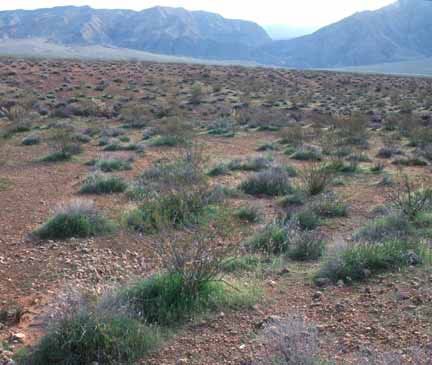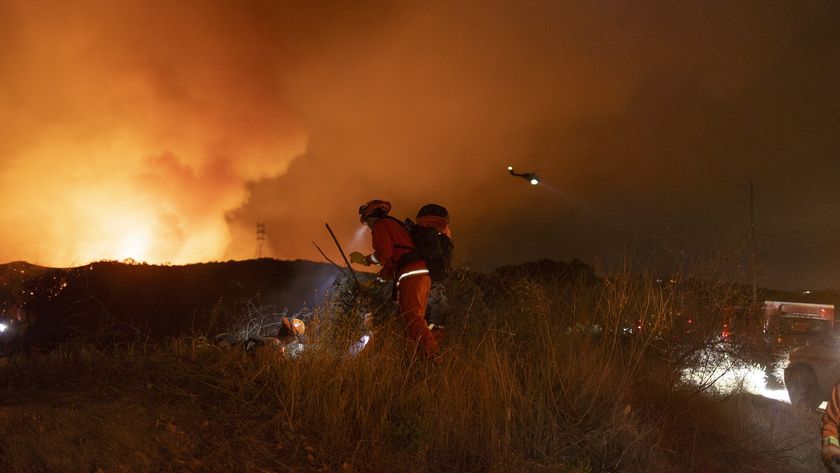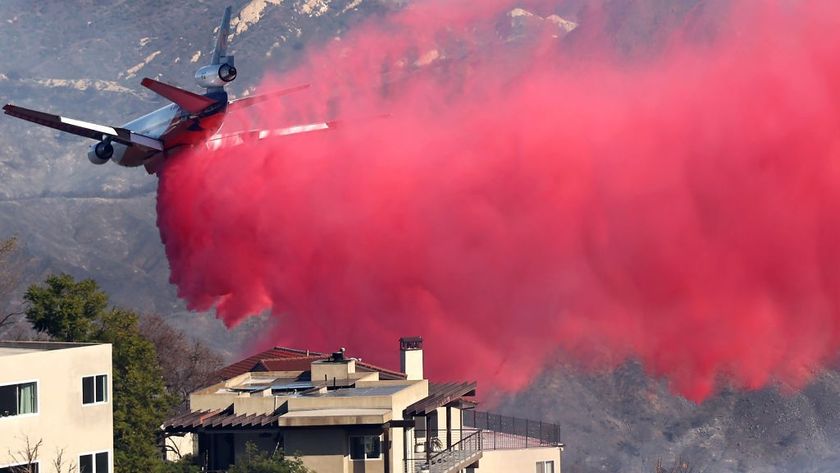Plant Invasion Fuels Southwest Wildfires

Non-native grasses in the Mojave Desert are fueling wildfires that have charred large swaths of native plants and killed local animals, dramatically changing the face of this California desert, say government scientists.
In addition to competing directly with native plants for scarce desert resources, non-native grass species have increased the length of the western fire season and made wildfires more widespread, according to several studies conducted by scientists at the U.S. Geological Survey.
The grasses have been spreading across the Southwest ever since they were brought over as feed for animals by Spanish colonists hundreds of years ago.
Because they are finer than native woody species, "the annual grasses are much more flammable," said Jon Keeley of the USGS. "They're much more likely to start a fire."
Keeley likens the problem to starting a campfire: small twigs will get a fire going much faster than thick branches.
Changing landscape
Historically, wildfires rarely bothered the Mojave because of gaps between shrubs that made it difficult for fire to jump from plant to plant.
Sign up for the Live Science daily newsletter now
Get the world’s most fascinating discoveries delivered straight to your inbox.
But red brome and other invasive grasses have changed all that by filling in the spaces between the native shrubs, allowing fires to spread more quickly and wiping out all the shrubs in the process.
Grasses such as red brome are also faster at re-establishing themselves after fires or in spaces cleared of native species to create fire breaks--they take advantage of the empty real estate before native bushes like creosotebush and chaparral have a chance to move back in.
"Ecological systems abhor a vacuum and something will fill it," Keeley told LiveScience.
"The shrubs have disappeared," agreed USGS scientist Lesley DeFalco. "It's a good chunk of the desert being converted."
Here to stay?
The non-native grasses particularly thrive after very rainy years. And if wet years are followed closely by very dry years, the grasses fuel the fires even more as it dries out.
Data compiled by USGS scientists show that wildfires are happening more often and are much bigger in certain parts of the Mojave now than in the past because of the grassy invasion. In 2005, for example, the area of the Mojave burned by wildfires was 132 percent of the total area burned in the previous 25 years.
DeFalco is currently working with other government scientists to figure out a way to root out the grasses, but says that the invaders may simply be here to stay.
- Top 10 Poisonous Plants
- Natural Disasters: Top 10 U.S. Threats
- Images: Invasive Species

Andrea Thompson is an associate editor at Scientific American, where she covers sustainability, energy and the environment. Prior to that, she was a senior writer covering climate science at Climate Central and a reporter and editor at Live Science, where she primarily covered Earth science and the environment. She holds a graduate degree in science health and environmental reporting from New York University, as well as a bachelor of science and and masters of science in atmospheric chemistry from the Georgia Institute of Technology.











